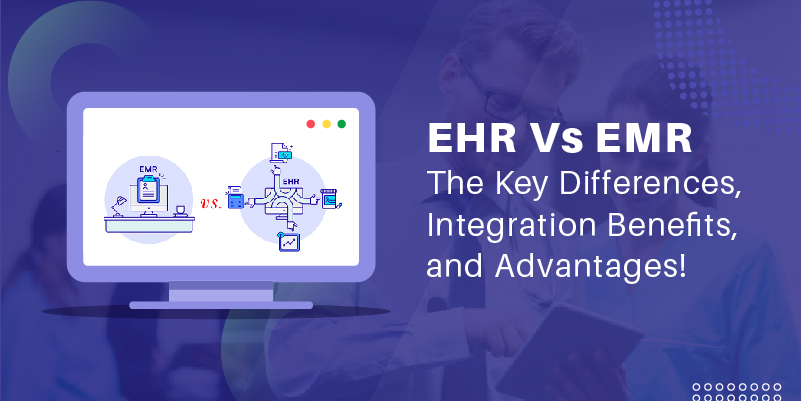Depending on the essentials, any industry that drives advanced approaches and grows incredibly significant will tend to develop their own vernacular. Simply put, there is zero need for outsiders to understand the insider terms. In other words, jargon separates professionals and commoners and simplifies many lengthy explanations and discussions of the steps taken. Experts will save a lot of time by implying these concepts.
For example, in the healthcare industry, “EHR” and “EMR” are the frequently used Jargons that professionals use daily. As one of the leading healthcare service providers, we wanted to set the record straight on what EMR and EHR are and how they differ in the medical field.
How Do EMR and EHR Differ?
The first and foremost thing to do is to understand the difference between the two. EHR stands for Electronic Health Record, and EMR stands for Electronic Medical Records.
An Electronic Health Record (EHR) is a digital version of a patient’s paper chart. EHRs are patient-centered records (real-time)that make data accessible immediately and securely to authorized users.
Electronic Medical Record (EMR) is a digital version of the clinician’s office’s paper charts. An EMR contains the treatment and medical history of the patients in one practice.
What Are The Key Benefits Of Electronic Medical Records?
Essential benefits of an EMR include supporting physicians to keep a record of information over time and recognize which patients need to come in for a screening, appointment, or checkup.
Instead of checking the paper files, practitioners get the required information about patients’ health instantly instead of going through the horrendous task of checking the paper files. Ideally, an EMR presents you with a full view of your practice’s state and how you are overall in treating patients. For safety and security purposes, the patient’s data cannot be shared outside of the office, and at times this can prove to be a significant disadvantage.
In any case, when the information needs to be shared for expert advice or any other specialist. Your staff needs to print out the patient’s chart and mail it or transmit via a secure fax machine, designated as conforming to the Health Insurance Portability and Accountability Act or HIPAA’s privacy requirements.
Electronic Health Records
An EHR has all the details of an EMR but supports much more actions than its counterpart. Like EMRs, EHRs assemble all medical information from all healthcare sources, including multiple physicians, hospitals, and the patient themselves.
Integration Benefits and Advantages Of An EHR:
- Compared to old-fashioned systems that partially or fully support paper records, it is easy for you to assign a few employees to log in to get access and modify documents. You can also carry out audits to identify when people tried to obtain unauthorized access.
- Hacking is widely present these days, and the healthcare industry suffers from such attacks too. HIn order to secure the patient information and other details shared with your parties, a security system like EHR needs to be integrated.
- EHR supports essential information to be available in emergency rooms for doctors to proceed with their treatment effortlessly. These details also cover insights on allergies and unsupported drugs to the patient.
- The patient portal enables patients or their caretakers to fill out forms from their home’s comfort before paying the Doctor’s office visit. Avoid t filling out stacks of paper forms that need to be input by hand themselves.
- An EHR comes packing advanced tools that improve efficiency and helps make better decisions. For instance, you can use analytical data to detect emerging patterns of patient behavior.
- Skip the Rx pads and save paper, send details to the pharmacy through electronic mediums, and the medicines can be processed at the pharmacist’s office while the patient travels from the Doctor’s office.
- Activate speech recognition in EHR to automatically transcribe what the Nurse or Doctor says. The text appears on the screen in real-time. It saves a lot of time and helps overcome practical difficulties.
- Analytics and Reports are the significant advantages of using EHR. Get insights on patients and also look at revenue projections and how many failed to pay up their bills.
Conclusion
It is vital to understand the uses of both the medical software before proceeding with the integrations. To help you to understand better, you can visit our webpage and request a free demo. Our experts will sit down with you to sort it out for more excellent benefits. Today, EHR or EMR is a vital component to any medical practice; make the best choice to provide adequate services.
